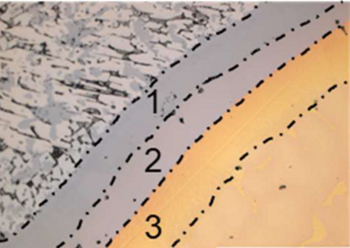Interfacial reaction and diffusion kinetics at the solid-liquid phase boundary of composite casting partners in the Al-Cu-Zn system: Experiments and multi-scale simulations
Interfacial reaction and diffusion kinetics at the solid-liquid phase boundary of composite casting partners in the Al-Cu-Zn system: Experiments and multi-scale simulations
The possibility of combining materials with different mechanical, chemical and physical properties in one component leads to the development of hybrid components with improved properties. In this context, the composite molding process is an efficient method to produce them. Here, the development of the intermetallic phases is the main factor influencing the performance of the final component. Therefore, understanding and controlling the formation and growth of these intermetallic phases is the key factor in optimizing the composite strength of newly developed hybrid components.
The objective of the project is to create a sequential multi-scale model to predict the growth of intermetallic phases between aluminum and brass in composite casting. This offers the possibility to determine suitable process parameters for a strong bond in composite molding or welding processes and thus to optimize the production of hybrid components. Participants in the project are Professor Babette Tonn, head of the Department of Foundry Technology, Professor Harald Schmidt, head of the Solid State Kinetics group, and Junior Professor Nina Merkert, chair of the board of the Simulation Science Center Clausthal-Göttingen (SWZ). The project is funded by the Deutschen Forschungsgemeinschaft (DFG) in a total amount of almost one million euros for the duration of 3 years.

Microstructure at the interface between AA6060 - CuZn37